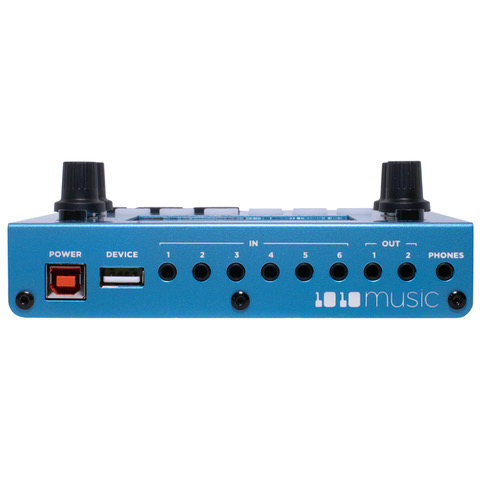Bluebox wants to be the compact hub of your studio or rig – it’s a mixer, a multitrack recorder, a player, and it throws in EQ, reverb, and time-synced delay effects for good measure. And it’s blue, obviously.
This US$499 cutie is the latest from 1010music, who brought us the clever Blackbox sampler and a Eurorack sampling module, too. And bastions of optimism, 1010music refer to something called a “gig” which involves… packing something up and moving, they say.
I think that’s probably moot, though, as I know anyone making music with various gear will find this box potentially interesting, whether they’re stationary or moving, in a small space or with room to spare. The simple matter of things is, few people have a fully normalled studio with a properly connected patch bay and recorders at the ready. (Perversely, I think we were more likely to have that in the days of DAT than we are now.)
No, it’s more likely you’ve got an idea and some random scramble of gear, and then at the last minute think – uh, yeah, I should probably mix this so I can hear it and might even want to record this. Maybe I want to record it as separate tracks or maybe I want the mix. Uh… wait… reverb? And you wind up staring at some random assemblage of little boxes or a Eurorack or whatever.
So we’re very, very keen to review this at CDM. And mobility and small size is important – well, I continue to go between a studio space and home, for fear that otherwise my muscles with atrophy like I was binge watching Netflix on the ISS. I like small things even at home; a lot of us live in little spaces.
Since it mixes and record and plays back separate channels and mixes those with effects, it basically a DAW in a box – without boot times, load times, configuration, and latency. (Ahem.)
Our resident hardware review guru Andreas has already called dibs on this one. But look at all they’re now doing with a microSD card:
- 5.5” x 5” x 2” size. (That’s 14 cm x 13 cm x 5 cm if you live in a civilized part of the world.)
- 6 stereo TRS inputs, for up to 12 mono tracks
- Separate stereo outputs – 3 of them, assignable (main mix, headphone out, and a assignable second stereo out – each of which can have their own pre-fade mix)
- Mix incoming audio
- Record the mixed track
- Record separate stems (yes, up to 12) – perfect for capturing Eurorack sketches and the like and then finishing the track and mixing later.
- Play back prerecorded tracks, which you can also route through the mixer
- Dedicated knobs and nav and transport buttons
Each channel strip does a lot, too, and has the option of various effects:
- Dedicated volume, gain, and pan per track, plus mute and solo
- 4-band parametric EQ per track
- Reverb engine
- Delay engine with tempo sync
- Route to the effects on each track as pre-fader, post-EQ aux
- Touch gestures + knobs for control

With MIDI I/O, you can even beat sync the delay or use the unit as a metronome. And it does all of this on a standard microSD, which these days are cheap even for huge amounts of storage.
They’ve also done some smart stuff with mapping of controls, it seems, but I’ll leave that for our review.
They were tired when they wrote the press release, because they refer to a “3.5” TRS output.” That would surely look impressive, though it would uh … cut down on portability. I think they mean mm, aka minijack. But the thing that I find really might win people over is the thoughtfulness of really building something like a software mixer into this, and giving you multiple dedicated outs.
Available direct. Watch for our review, for sure.
And check our previous review from Andreas:
